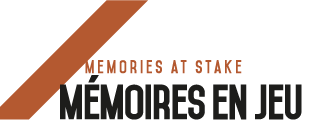Nombre des délégations et journalistes internationaux qui visitèrent Tuol Sleng dans les années qui suivirent la chute du régime des Khmers rouges écrivirent des commentaires dans les livres de visiteurs que le musée mettait à leur disposition. La géographe Rachel Hughes étudie la dimension de médium d’instruction politique de ces livres, et met en évidence leur rôle comme élément de dialogue international et source d’information sur les premières années du musée.
Mots clés : musée du Génocide de Tuol Sleng, Cambodge, livres de visiteurs, République populaire du Kampuchéa, solidarité, mémoires de prison, témoignage.
WORKS CITED
Agamben, Giorgio, 1999, Remnants of Auschwitz: the witness and the archive, translated by D. Heller-Roazen, New York: Zone Books.
Amer, Ramses, 1990, “The United Nations and Kampuchea: the issue of representation and its implications,” Bulletin of Concerned Asian Scholars, 22, no. 3, p. 52-60
Benzaquen, Stéphanie, 2012, “Witnessing and re-enacting in Cambodia: reflection on shifting testimonies,” AI & Society, 27, no. 1, p. 43-51
Chandler, David, 1999, Voices from S.21: terror and history in Pol Pot’s secret prison, Chiang Mai: Silkworm Books.
Chum, Mey, 2012, Survivor: the triumph of an ordinary man in the Khmer Rouge Genocide, translated by Sim Sorya and Kimsroy Sokvisal, Phnom Penh: Documentation Centre of Cambodia.
Coffee, Kevin, 2013, “Visitor comments as dialogue,” Curator, 56, no 2, p. 163-167.
Hinton, Alexander Laban, 2016, Man or monster? The trial of a Khmer Rouge torturer, Durham and London: Duke University Press.
Hughes, Rachel, 2003, “Nationalism and memory at the Tuol Sleng Museum of Genocide Crimes, Phnom Penh, Cambodia,” in K. Hodgkin and S. Radstone (eds). Contested pasts: the politics of memory, London & New York: Routledge, p. 175-192.
Huy, Vannak, 2010, Bou Meng: A survivor from Khmer Rouge prison S.21, Phnom Penh: Documentation Centre of Cambodia.
Isaac, Rami K., 2015, “Interpreting the emotions of visitors: a study of visitor comment books at the Grūtas Park Museum, Lithuania”, Scandinavian Journal of Hospitality and Tourism, 15, no. 4, p. 400-424.
Ledgerwood, Judy, 1997, “The Tuol Sleng Museum of Genocidal Crimes: national narrative”, Museum Anthropology, 21, no. 1, p. 82-98.
Macdonald, Sharon, 2005, “Accessing audiences: visiting visitor books”, Museum & Society, 3, no. 3, p. 119-136.
Noy, Chaim, 2008, “Writing ideology: hybrid symbols in a commemorative visitor book in Israel”, Journal of Linguistic Anthropology, 18, no. 1, p. 62-81
Noy, Chaim, 2008, “Pages as stages: a performance approach to visitor books,” Annals of Tourism Research, 35, no. 2, p. 509-528
Personal communication, Bill Herod (Non-Government Organization consultant), 2000.
Personal communication, Keo Lundi (Tuol Sleng museum guide), 2000.
Ruscio, Alain, 2008, Cambodge, an I – Journal d’un témoin, 1979-1980 (Paris: Les Indes Savantes).
Sanchez-Biosca, Vicente 2016, “Non-Author Footage, Fertile Re-Appropriations. On Atrocity Images from Cambodia’s Genocide” in D. Cavallotti, F. Giordano, L. Quaresima (eds) A History of Cinema Without Names (Mimesis International, 2016), p. 137-145.
Vann, Nath, 1998, A Cambodian prison portrait: one year in the Khmer Rouge’s S.21, trans. Moeun Chhean Nariddh (Bangkok: White Lotus).
Zinoman, Peter, 2001, “Reading revolutionary prison memoirs,” in H. T. Ho Tai (ed.) The country of memory: remaking the past in late socialist Vietnam, Berkeley: University of California Press, p. 21-45.
